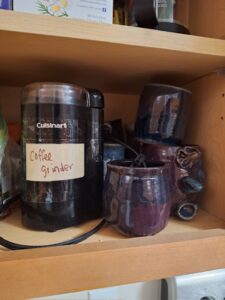Holidays Parshas Zachor/Memory


Memory loss is fascinating and, for many of us, a fearful thing. We don’t get to choose what we remember, or how we remember. Details become fuzzy, some memories may be conflated or combined, others may be completely lost. Yet, while this loss may be frightening — it can also be understood as an essential part of our experience as humans created in the image of the Divine.
The Torah states in Genesis 1:27 that humans are created in the image of G-d. The verse concludes with the words ״זכר ונקבה ברא אתם״ (zachar u’nekeivah bara otam), and the standard translation is “male and female (G-d) created them.״ Interestingly, the Hebrew word זָכָ֥ר (zachar) — or male — contains the same Hebrew letters as the word for memory. And the Hebrew word נקבה (nekeivah) — or female — is linked to the root meaning “an orifice or a hole.” These root meanings of zachar and nekeivah raise all kinds of interesting questions from a gender-based and feminist perspective. But what if, for a moment, we understood the verse more playfully and poetically to mean: G-d created humankind to be just like G-d — with memories and holes. This is how we are created; this is who we are. We have memories with gaps in them. And both are holy; both come from God.
Traditionally, we understand that the act of tapping into memory is a sacred act. When we are given the instructions for Shabbat, we are told to “remember” Shabbat. When we mimic G-d’s behavior by working for six days and then stopping, we are also being instructed to opt into the Divine act of memory. Shabbat is not just about what I need to do — or didn’t get done. It’s about remembering why we are created and opting into relationship with G-d.
Memory moments on Shabbat are a sacred part of our tradition, from reading Torah to the words we recite when making Kiddush and other prayers, or in my family, to sharing our favorite chassidic tales at a Shabbos Tish. But what happens when the memories we are instructed to remember are not the comfortable cozy memories? What happens when the mitzvah to remember Shabbat and make it holy becomes interwoven with the mitzvah to remember something more painful — a violent memory filled with trauma, conflict, and war?
We are presented with this tension on this very Shabbat, the Shabbat preceding Purim, when we are commanded to read Parashat Zachor — when we fulfill the commandment זָכ֕וֹר אֵ֛ת אֲשֶׁר־עָשָׂ֥ה לְךָ֖ עֲמָלֵ֑ק, zachor et asher-asah l’cha Amalek: “Remember what Amalek did to you on your journey, after you left Egypt—how, undeterred by fear of G-d, he surprised you on the march, when you were famished and weary, and cut down all the stragglers in your rear.” The parsha goes on to say, “Therefore, when your G-d grants you safety from all your enemies around you, in the land that your G-d is giving you as a hereditary portion, you shall blot out the memory of Amalek from under heaven. Do not forget! (JPS, Deuteronomy 25: 17-19)
These words are part of Moses’ farewell instructions to the Israelites. Remember what happened when we left Egypt, be cautious of who you associate with, don’t forget who had your back and who did not. Why do we need to remember not to forget this horrific event? Why do we read such a painful reminder in shul, on Shabbat, as a community — a reminder that is all the more painful this year, in the midst of ongoing war. And why do we read these verses before Purim, a holiday of joy?
The Lubavitcher Rebbe z”l wrote a response to someone who asked this question, reflecting on the nature of Haman (the evil villain of the Purim story) as a descendant of the Amalekite tribe: “Haman and Amalek represent the obstacles and hindrances of which a Jew encounters on their way to receive and observe Torah and mitzvot with enthusiasm and joy in everyday life . . .” The Lubavitcher Rebbe z”l states that we are each given the resources and tools needed to overcome our inner “Amalek” and, once we figure out how to use them, we can realize that the obstacles and hindrances are actually “helpers and catalysts for greater achievements” and bring us closer to a more meaningful relationship with the Divine. (Excerpt from a letter written by the Rebbe on Rosh Chodesh Adar II, 5738)
The Rambam, states that the commandment of remembering Amalek is not an individual commandment but incumbent on the community as a whole. (Sefer Hamitzvos/Gutnick Chumash). When I put the Rambam in dialogue with the Rebbe, I understand that this is a communal reminder because we need each other to do the human work of struggling and overcoming obstacles together.
But why before Purim?
One of my earliest and most deeply ingrained memories of Purim is how my father reads Megillat Esther. He is a tall, somewhat imposing man and reads the Megillah in a story-like manner, and I could easily visualize the events just by the tone of his voice. And like most Megillah readers, he gets really loud at the pivotal moment in the story of Purim —
– בַּלַּ֣יְלָה הַה֔וּא נָדְדָ֖ה שְׁנַ֣ת הַמֶּ֑לֶךְ וַיֹּ֗אמֶר לְהָבִ֞יא
(Esther 6:1) אֶת־סֵ֤פֶר הַזִּכְרֹנֹות֙ דִּבְרֵ֣י הַיָּמִ֔ים וַיִּהְי֥וּ נִקְרָאִ֖ים לִפְנֵ֥י הַמֶּֽלֶךְ׃ –
That night, sleep deserted the king, and he ordered to bring —
the Book of Remembrances, the archives, to be brought; and it was read to the King.
סֵ֤פֶר הַזִּכְרֹנֹות֙, sefer ha’zichronot, the book of recorded memories, is a storybook for a king who can’t fall asleep. The Rabbis of the Talmud state that this was common practice for Kings who could not sleep, they would have their archived stories read to them. (Megillah 15b) I guess this is like late-night scrolling through my own IG page or Google pics “remember when” and being reminded of various events that felt worthy of having a picture taken. Achashverosh, as the Talmud explains, was up late stewing that something was going on between Haman and Esther and wondered why no one had told him. Rashi imagines Achashveriosh worrying that perhaps someone did him a favor and he didn’t repay him, and now no one would care about him and his wellbeing. He is thinking, if you will, about memories and holes. He is concerned about the gaps in his own recollection. And then, suddenly, he reads and is reminded of the incident when Mordechai saved his life, and he never repaid him.
This is the key moment of transition for the Jewish people during the events of Purim. It all stems from memory. Achashverosh forgets. He knows he forgets. He does not choose what he forgets, and he remembers almost by chance. Achashverosh’s retrieval of memory becomes the occasion for our communal celebration of memory. His memory of forgetting and remembering while reading a book of memories becomes part of our own memory — a story still chanted from a scroll in community each year.
There may not have been a miracle if the king’s memories had not been written down. Because we humans — we don’t get to choose which memories we remember. But we can choose how we preserve memories and sometimes we can choose whether and how those memories are shared with others.

Brain experts have been unable to solve the mystery of memory. We cannot see into the memories and holes of another person. I am okay with this failure of science! These are parts of G-d within us that we are not meant to see. I want that part of being created in G-d’s image to remain a mystery, and not a magnetic resonance image (MRI). I want the mystery of sacred memory, of personal memory, to remain just that — sacred and personal.
While scientists and doctors can’t see our private memories, they can tell us how to form memories, by neurons in the brain connecting. The key word is connection. This is Divinity! This is Shabbos. And this is Purim. We need to gather on Shabbos so that we can be a community. We need to gather and hear the painful words of Parshas Zachor to that we can overcome obstacles together. We need to gather on Purim to hear Megillat Esther and the story of remembering and forgetting and remembering again — because we are human.
We need to do all this together. We need to connect. We need to be communal synapses. The only way to create new memories rooted in healing, kindness, and non-violent interactions with our inner and external Amalek, is to connect with each other. As Reb Zalman Schachter-Shalomi z”l would often say at the end of his drashot “the only way to get it together is . . . together.”
As we move into Purim this year, may we be blessed with the opportunity to create new memories together, memories filled with joy and celebration of life.
Hindy Finman is a student at the Rabbinical School of Hebrew College in Newton, MA.
Explore Graduate Programs Tamid Adult Learning Classes Support Our Work

